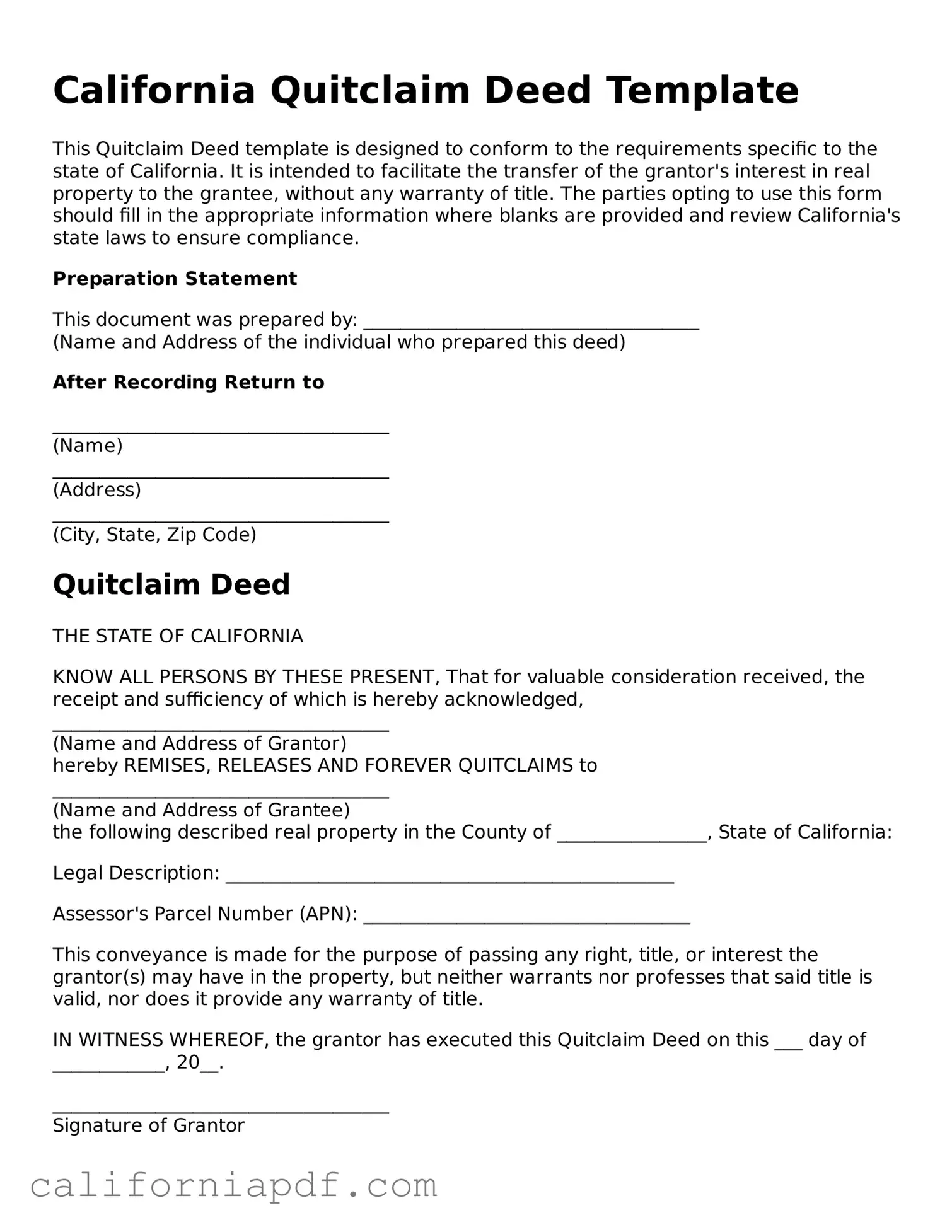California Quitclaim Deed Template
This Quitclaim Deed template is designed to conform to the requirements specific to the state of California. It is intended to facilitate the transfer of the grantor's interest in real property to the grantee, without any warranty of title. The parties opting to use this form should fill in the appropriate information where blanks are provided and review California's state laws to ensure compliance.
Preparation Statement
This document was prepared by: ____________________________________
(Name and Address of the individual who prepared this deed)
After Recording Return to
____________________________________
(Name)
____________________________________
(Address)
____________________________________
(City, State, Zip Code)
Quitclaim Deed
THE STATE OF CALIFORNIA
KNOW ALL PERSONS BY THESE PRESENT, That for valuable consideration received, the receipt and sufficiency of which is hereby acknowledged, ____________________________________
(Name and Address of Grantor)
hereby REMISES, RELEASES AND FOREVER QUITCLAIMS to ____________________________________
(Name and Address of Grantee)
the following described real property in the County of ________________, State of California:
Legal Description: ________________________________________________
Assessor's Parcel Number (APN): ___________________________________
This conveyance is made for the purpose of passing any right, title, or interest the grantor(s) may have in the property, but neither warrants nor professes that said title is valid, nor does it provide any warranty of title.
IN WITNESS WHEREOF, the grantor has executed this Quitclaim Deed on this ___ day of ____________, 20__.
____________________________________
Signature of Grantor
____________________________________
Print Name of Grantor
STATE OF CALIFORNIA
COUNTY OF ________________
On _____ day of ____________, 20__, before me, ____________________________________(Name of Notary), personally appeared ____________________________________(Name(s) of Grantor(s)), proved to me on the basis of satisfactory evidence to be the person(s) whose name(s) is/are subscribed to the within instrument and acknowledged to me that he/she/they executed the same in his/her/their authorized capacity(ies), and that by his/her/their signature(s) on the instrument, the person(s), or the entity upon behalf of which the person(s) acted, executed the instrument.
I certify under PENALTY OF PERJURY under the laws of the State of California that the foregoing paragraph is true and correct.
WITNESS my hand and official seal.
____________________________________
Signature of Notary Public
My commission expires: _______________
